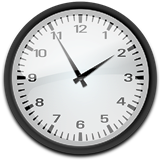
A team of researchers at BGU, led by Prof. Ron Folman, has successfully placed a clock in two places simultaneously. In an article published in Science, the team describes how the achievement will in the future facilitate the study of the role of time in the dynamics of the universe. For example, we may gain better understanding of the connection between Einstein’s theory of general relativity and quantum mechanics. These two theories constitute the physics revolutions of the 20th century, and there are numerous attempts to unify them or at the very least understand how they work together.
The researchers, members of the atom chip laboratory, took an atom and turned it into an atomic clock – similar to that used in many technological applications e.g. the GPS system. In parallel, they transferred the atom through a device capable of positioning it in two places simultaneously. This device, called an interferometer, works according to the laws of quantum mechanics which enable an object to be in several places at once.
According to standard quantum mechanics, time “ticks” at the same pace all over the universe, whereas according to the general theory of relativity, time does not “tick” at the same pace everywhere as it is influenced by gravitational forces of large masses such as the Earth. The researchers therefore asked what would happen to the clock after passing simultaneously through several places where time “ticks” at a different pace, once it was in one place again.
The researchers showed that in this very odd situation a new phenomenon presents itself, which may in the future show that the general theory of relativity plays an important role at the border between the quantum world, in which an object can be in several places simultaneously, and the classical world (as our day-to-day world of large objects is known), in which an object is not allowed to be in several places at once. The research hints at the possibility that a particle, such as the electron, can move from the quantum world to the classical world with the help of general relativity.
Technically, the team used advanced technologies to cool atoms with lasers, so that the atoms enter the quantum realm where a state in which they are in several places simultaneously may survive for times long enough to conduct the experiment. The atoms are cooled to a few nano-Kelvin, namely, very close to absolute zero (-273 Celsius). Next, the atoms were exposed to strong magnetic fields, which positioned each atom in two places simultaneously. In parallel, the atoms were transferred to a state where they could act as atomic clocks and measure time. This is done by manipulating the internal atomic states made of a variety of energies and angular momentum levels.
Finally, it is important to clarify that in scientific language, instead of saying that an object (a clock in our case) is in several places simultaneously, it is typically stated that the object is in a “spatial quantum superposition”. This new terminology is meaningful as all attempts to interpret the reality of this situation with day-to-day language have led to some sort of contradiction. The strange reality of the quantum world can perhaps only be accurately described by mathematics. Using words, which originate in our day-to-day (“classical”) experience, always fails those who attempt to harness them for the description of the quantum world. Perhaps one may alternatively state that the clock is in a state where it somehow “feels” how time “ticks” in several places at once.
The team included Ph.D. student Yair Margalit, post-doctoral fellows Dr. Zhifan Zhou and Dr. Shimon Machluf, and researchers Dr. Yonathan Japha and Dr. Daniel Rohrlich.
